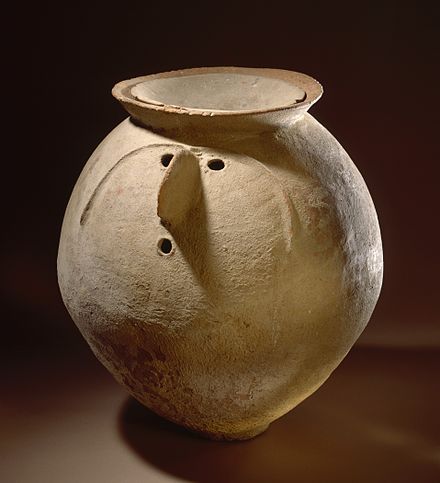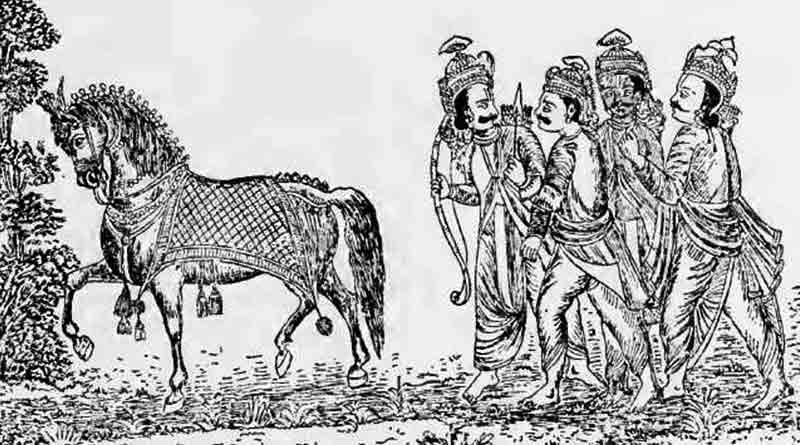If you wish to learn more about any civilization, then just go through their economic and social life. By just learning about their society as well as economic life, one will get to know most of the things about that particular society or civilization. In this section, the economic and social life of the Vedic age will be discussed.
Economic Life of Early Vedic Age
Early Vedic economic was pastoral character because the domestication of animals was the main economic activity. Cow & horse were the most important animals of Vedic Aryans. The cow has great economic significant & horses were enjoying great strategic significance. Hunting & food gathering activities were also practices. Early Vedic / Rig-Vedic Aryan consumed different types of food grain such as Yava (Barley), Vrihi (Rice) & Godhuma (Wheat). But these were wild in nature not cultivated. Agriculture was not practiced during the Early Vedic Age.
The fourth mandala of Rig-Veda contains the reference to agriculture but it is considered to be a later added. The cow was the main form of property. The concept of property in form of the land was yet to have emerged. The number of cows held by family/person indicated its wealth / economic status.
Various arts and crafts were practiced during the Early Vedic Age. The work of Carpenter was the most important craft. carpenter to enjoy high status because he was the maker of the chariot which was used in wars & battles. Gold, Silver, Copper, Bronze smithing was also practiced.

Leatherwork was another important craft. Spinning & weaving were practiced by women. Trade & commerce were also practiced by monetization of economic was absent Barter system was followed. Taxation system as before. War booty was an important source of information about the tribe. It was distributed by Vidath among the members of the tribe.
Economic Life of Later Vedic Age
Agriculture was the mainstay of economic life during the Later Vedic Age. Crops like wheat, rice, barley were cultivated. Satapatha Brahmana devotes an entire chapter to plowing rituals. The pastoral activities as well as the hunting also continued. The cow was the main property. A large number of new arts & crafts emerged during the Later Vedic Age. Many of these were outcomes of knowledge of iron. Taitiriya Brahmana & Vajasneyi Samhita contain a long list of craft professions practiced during the Later Vedic Age.
Trade & commerce was far more developed in the Later Vedic Age because of availability of more resource. Nishka & Shatamana were used as means of exchange during the Later Vedic Age. But these were not coins. They were ornamented. The monetization of economics was still absent. Nishka was a gold ornament & Shatmana was a silver ornament. The economic significance of war booty declined during the Later Vedic Age. As a result of which Vidath disappeared.
Social Life of Early Vedic Age

The Early Vedic society was tribal in nature because Vedic Aryans were living in small groups & each of the group was having its own distractive socio-cultural outlook. Society was egalitarian in outlook because sharp social divisions were absent. Liberal & progressive outlook was prevalent in society. There was no rigid restriction on the public & private life of people. Social mobility was of a very high order because a person could change his Varna status by changing his profession.
System of Family and Marriages
The family was the primary unity. It was the most important social institution. The system of the joint family was followed because members of no generation lived together. The family was patriarchal, patrilineal & patrilocal in character. The Head of the family known as “Kulaba” represented family members in socio-cultural matters.
The institution of marriage was well developed during the early Vedic Age. It was considered a sacrament (sacred ritual). Divorce was absent. Child marriage was absent & there was no custom of doing very. Monogamy was normal practice but polygamy was also known. Polygyny was more common than polyandry.
Inter Varna marriages were prevalent. Both Anuloma (Hypergamy) & Pratiloma (Hypo gamy) were practiced. The social stratification system evolved gradually during the Early Vedic Age. It was known as the “Varsa System”. When Vedic Aryan entered India, the social difference was based on the color of skin white, color Aryans & non-white. Dasas & Dasyus were two groups in population Dasa are considered to be Early Aryan Groups who had lost their skin color to some extent due to intermarriages with indigenous people. The Dasyus were non-Aryan indigenous people. The Aryan was more hostile towards Dasyus than Dasas.
Varna System
During a long stay in India, 3 classes emerged among Aryans on basis of professions. These were the Brahmana, Kshatriya & Vaisya. Brahmana was supposed to indulge in teaching & learning, the Kshatriya formed martial class. They are involved in administration & military. The Vaishyas were the producing class. During the last phase of the Early Vedic Age, four-fold Varna division emerged comprising the Brahmana, Kshatriya, Vaisya, and the Shudras. Only one reference of this four-fold Varna division is found in Rigveda in “Purshasukta” Hymn of 10th This only one reference indicates that the 4 fold Varna division was yet to be established.
The Varna system was so liberal & flexible that even members of one family could belong to different Varnas. In Rigveda a person says that I am a bard (poet), my mother grinds corn & my father is a physician. We all three belong to different Varnas by way of our profession but still, we leave together happily as members of one family.
Status of Women
The status of women was high in society, their rights & privileges were almost equal to their male counterparts. The birth of their daughter was not desired but once born, she was treated with honor and kindness. The women enjoyed the right to participate in political, eco & religious act. They participated in Sabha & Samiti.
The profession like spinning/weaving was limited to women. Some of the rituals have cared for incomplete without the participation of the wife. The women received education along with their male counterparts. Some of the women used to pursue education for a whole life. They were known as “Brahmavadini”. Women like Apala, Ghosa, and Lopamudra & Vishwavara were so highly educated that they composed Hymns of Rig-Veda. The evil practices veiling (Pardas), dowry, child marriage & Sati-pratha, etc. were absent.
Education System
The education system was highly advanced during the Vedic age. Sages imported learning in Gurukuls. Both boys & girls received an education. The script was not known education was imparted orally. The subject matter of education (contents) was based on the Varna status of individuals.
Slavery: The practice of slavery was there during the Vedic Age. Women slaves were employed for household activities.
Social Life of Later Vedic Age
The tribal character of society got diminished to some extent during the Later Vedic Age. Because of an increase in the size of tribes, due to population growth & emulation of the tribe. The nomadic life came to end & sedentary/settled life commenced. The society was still egalitarian, liberal but these features were less dominant / degree when compared with the Early Vedic Age. Social mobility had also got reduced because the change in Varna status was not appreciated in society. The social status of a person had begun to be linked with birth as well as profession. Family and marriage structure was also based on this social status system.
Social stratification – The four-fold Varna division got crystallized during this age. All the 4 Varna got firmly established. The Varna status of individuals was being linked with birth as well as profession.
Status of Women
The status of women was still high. The women enjoyed status almost equal to their male counterparts. But when compared with the Early Vedic Age some elements of decline were. The birth of a daughter was considered a curse. Women were not allowed to participate in Sabha & Samiti.
The women still participated in religious & economic activities. Education wasn’t allowed for women and used to treat as domestic slaves. Gotra system emerged during the Later Vedic Age. The 1st reference of Gotra is found in Atharva-Veda. Gotra indicates a common lineage. The people having common decadence were considered a member of the same Gotra.
Ashrama System
The Ashrama system emerged during the Later Vedic Age first reference to the Ashrama system is found in “Chandogaya Upanishad”. In this book, the first three Ashrams were mentioned. The 1st reference of all the four Ashrams is found in “Jabala Upanishad”.
In the Ashrama system, the life span of a person is considered to be 100 years, and this entire life span was divided into four phases known as Brahmacharya, Grahstha Ashram, and Vanaprastha Ashram & Sanyas Ashram. In Brahmacharya Ashram a person was supposed to indulge in learning. In Grahstha Ashram a person was to live the life of the householder. In Vanaprastha Ashram a person was supposed to live a family & move into the forest. In Sanyas Ashram a person was supposed to live the life of renunciation by breaking bonds from everybody. Shudras were entitled to Grahstha Ashram only.
Other important elements common
Clan & Kingship enjoy a phase of great significance in social life during the Vedic Age. Blood relations also enjoyed a place of great significance in the life of individuals. The social relations were largely informal/primary related to the family. Age was an important factor in deciding the status of individuals. The aged were respected in society.

